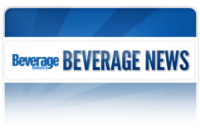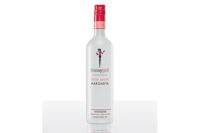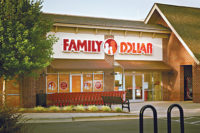During the recession, foodservice and on-premise channels struggled as consumers began eating and drinking at home more often to save money. As the economy started to improve, shoppers slowly returned to their pre-recession habits, which included dining out more often and making fewer shopping trips, according to analysts. As a result, revenue for supermarkets and grocery stores declined in 2011 and 2012, reports Santa Monica, Calif.-based IBISWorld. However, revenue slightly increased last year because of increasing consumer demand for premium brands as well as private-label products, notes the firm’s October 2013 report “Supermarkets & Grocery Stores in the US.”
“Both [premium and private-label products] have been rising in popularity among consumers,” says Jeffrey Cohen, industry analyst for IBISWorld. “This is largely due to continued economic recovery and increases in per capita disposable income due to declines in unemployment.”
Nevertheless, other retail channels including mass merchandisers and club stores continue to threaten supermarkets, experts note. These big-box retailers offer one-stop shopping, low prices and extensive product ranges, IBISWorld’s Cohen says. Plus, many of them now feature expanded grocery sections, which directly compete with supermarkets. Discount retailers, drug and convenience stores, online retailers, and fresh-format stores, such as Austin, Texas-based Whole Foods Market, also are intensifying the competition with low prices, convenient offerings and healthy selections, analysts add.
In 2012, supermarkets accounted for nearly 50 percent of grocery sales, according to Chicago-based Mintel. Five years from now, the market research firm expects the channel to lose approximately 2 percentage points due to competition from other channels.
Accentuate the positive
Despite a number of retail segments invading its space, supermarkets are working to hold their ground in the competitive retail world by leveraging their strengths. For instance, supermarkets can protect and grow share by keeping a close eye on their value proposition and bulking up their private-label offerings, says Susan Viamari, editor of Times & Trends at Information Resources Inc. (IRI), Chicago.
Private-label share is highest in the grocery channel, with 21.9 percent of unit sales and 18.2 percent of dollar sales, she notes.
“In grocery and other channels, retailers have been placing considerable focus on building out and strengthening their private-label programs,” Viamari says. “Private label is seen as a point of differentiation — when done right, it elevates the value proposition of the retail banner and it brings higher margin versus national brand alternatives.”
This higher margin can be particularly important for supermarkets because the channel is known for having very thin profit margins, IBISWorld’s Cohen says. According to Willard Bishop’s Grocery SuperStudy benchmarks, gross margin for private-label products averages 7 points higher than gross margin for national-brand products, says Jon Hauptman, partner at the Barrington, Ill.-based firm.
To boost their private-label sales, some supermarkets have even used their retail power to outperform brand owners by offering limited shelf space and leasing terms and conditions, according to IBISWorld’s report.
Recently, supermarkets also have been promoting their high-end food and beverages as well as increasing their prepared food offerings, says David McGoldrick, research associate with Chicago-based Euromonitor International. Generally, these high-end products include natural, organic and other types of beverages that fall under the health-and-wellness umbrella, he explains. Along these lines, many supermarkets also have been expanding their gluten-free offerings to compete with specialty retailers like Whole Foods Market and Monrovia, Calif.-based Trader Joe’s, IBISWorld’s Cohen notes.
Shelf selection
Compared with other channels, supermarkets also boast the largest amount of shelf space for groceries because that is the channel’s primary focus, Euromonitor’s McGoldrick points out. Therefore, these stores typically offer the greatest selection of beverages and other products at reasonable prices, he adds. Unlike in smaller channels, shoppers also have the opportunity to stock up on bulk beverage offerings at supermarkets. According to IRI’s Viamari, the grocery channel generally is viewed as a stock-up channel. For instance, juice often is purchased in multi-serving containers. As a result, the best-selling non-alcohol beverage category within supermarkets is juice, Euromonitor’s McGoldrick says. Coffee is another top-selling beverage category within the channel, he notes.
“Along with juice, it’s something that you’re going to be drinking regularly, something you want to buy in bulk and be able to prepare when you need it,” he explains.
IBISWorld’s Cohen affirms that staple products such as orange juice have increased in sales; however, soda and overall beer sales have decreased, he says. Carbonated beverages decreased approximately 3 percent in dollar and unit sales within supermarkets for the 52 weeks ending Sept. 8 compared with the prior-year period, IRI reports. However, the market research firm notes that dollar sales of beer, ale and hard cider increased 3.6 percent and unit sales increased 4.3 percent for that timeframe compared with the prior-year period. Additionally, bottled water performed well within the channel, showcasing 3.6 percent dollar sales growth and 2.8 percent unit sales growth compared with the prior-year period, IRI reports.
Within the alcohol segment, wine has become more popular, mostly because of the widely advertised health benefits of drinking wine in limited quantities, IBISWorld’s Cohen notes. According to IRI data, dollar sales for wine increased almost 4 percent in the 52 weeks ending Sept. 8 compared with the prior-year period, and unit sales increased just more than 1 percent.
Not all supermarkets legally are able to sell alcohol, but in the stores that are, craft beers are an increasing segment, Euromonitor’s McGoldrick says. As a result, many retailers are creating special areas for craft beer, he notes.
Overall, the beverage segment of supermarkets accounted for approximately 7 percent of revenue last year, IBISWorld’s Cohen adds.
Technological advances
Although it might be difficult for other channels to compete when it comes to shelf space for groceries, big-box retailers have the square footage to accommodate everything from groceries to clothing to electronics to home goods, providing a convenient one-stop shopping experience for consumers. To emulate this experience, many supermarkets have added in-store pharmacies, banks and coffee shops to increase convenience for the shopper, IBISWorld’s Cohen says. Plus, although supermarkets have been known for their checkout lines dedicated to shoppers purchasing “10 items or less,” new self-service checkout lanes are adding another level of convenience for shoppers.
“Sometimes you have customers who are purchasing 10-15 items, and it’s, of course, well known that there are these specialized checkout lanes for if you have 10 items or less; however, even those lanes can get clogged up,” Cohen says. “Sometimes you just have people who go into supermarkets wanting to get one, two or three items, so more supermarkets have jumped on board with self-service checkout lanes to increase the flow of traffic.”
In order to further improve the shopping experience, many supermarkets are leveraging technology such as mobile applications, he adds. For instance, Jacksonville, Fla.-based Winn-Dixie Stores Inc. developed a free app that is updated every Wednesday with weekly specials. The app also enables shoppers to create a virtual grocery list. Similarly, Cincinnati-based The Kroger Co. has an app that announces upcoming deals and is equipped with a store locator, he says.
Like retailer mobile apps, loyalty card programs also provide shoppers with incentives to shop more intensively and/or more often, Willard Bishop’s Hauptman says. “They also provide retailers with data to help them develop and distribute targeted offers that strongly appeal to selected shoppers based on historical purchase behavior,” he notes. “These targeted offers are relevant and compelling and give shoppers a strong reason to visit their neighborhood supermarket.”
On the other hand, some supermarket operators have decreased or completely eliminated their loyalty card programs, Euromonitor’s McGoldrick notes. For instance, Itasca, Ill.-based Jewel-Osco recently eliminated its Preferred Savings loyalty card program and, instead, offers discounts to all of its customers.
“[This pushes] the fact that it’s going to be low prices for everyone rather than just those with the loyalty card membership,” he explains.
Nevertheless, IBISWorld expects more supermarkets to implement customer loyalty programs and reward cards to offer discounts and increase return visits, Cohen says. “We’re also expecting that stores will continue developing mobile applications as technology increases, just as a way to improve the consumer shopping experience,” he says.
Taking comfort in familiarity
The channel’s history of providing a wide selection of products at reasonable prices within a familiar store layout also brings consumers into stores, Euromonitor’s McGoldrick says.
“Grocery shopping habits are one of the more stable shopping habits,” he explains. “You kind of get into a comfort zone with your local grocery store; you know where everything is [and] you can get in and out quickly.”
Many of the major supermarket chains have been in existence for more than 80 years, IBISWorld’s Cohen notes. Parents take their children grocery shopping, and once these children grow up, they become more likely to shop at supermarkets as well, he explains. As a result, these stores have become rooted in American culture, he says.
Additionally, supermarkets are located in most urban areas throughout the United States, making it convenient for consumers to shop the channel, Cohen adds.
From 2013 to 2018, IBISWorld expects the supermarkets channel to increase nearly 1 percent in revenue because of the continuing economic recovery, he says. But supermarket retailers shouldn’t get too comfortable just yet.
Consumers continue to shop at supermarkets because they offer a convenient shopping experience and a familiar environment, Willard Bishop’s Hauptman says. “However, as other formats continue expanding their grocery offerings, these traditional reasons no longer are enough to keep attracting shoppers,” he says. “Success, in some cases even survival, will require supermarkets to refocus on providing a unique, relevant and compelling mix of products, services and experience or risk losing shoppers to formats that do.”








